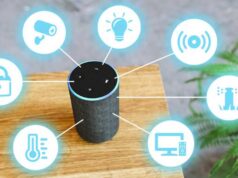Mobile web automation pertains to the process of testing websites or web applications using genuine mobile devices, such as those running Android and iOS. This approach involves assessing not only the visual presentation but also the overall performance of these websites and web apps on actual mobile devices. By conducting tests on real device cloud, it guarantees that the evaluations are conducted under authentic, real-world conditions, leading to enhanced performance outcomes.
In essence, mobile web automation on genuine devices elevates the accuracy and reliability of testing procedures. It replicates real user scenarios, identifies potential bottlenecks, and ensures that the website or web app is robust and responsive across a diverse range of mobile devices.
What is automated mobile testing?

Automated mobile testing involves the mechanization of the testing process for websites and applications, whether they are native or hybrid, across an extensive array of mobile devices. This method employs automated tools and scripts to execute various test scenarios, enhancing the breadth of test coverage and expediting the debugging process when compared to manual testing.
In essence, automated mobile testing streamlines the repetitive and time-consuming aspects of testing by utilizing pre-defined scripts and test cases to assess the functionality, compatibility, and performance of mobile apps and websites. This approach enables testing on a diverse spectrum of mobile devices, operating systems, and configurations, ensuring a more comprehensive evaluation of the application’s behavior.
The Need for Mobile Automation Testing

The global landscape of internet access is characterized by the utilization of over 9,000+ distinct mobile devices. Within such a diverse ecosystem, manually testing websites or applications across every single device becomes an impractical feat for human teams. This predicament is where the significance of mobile automation testing emerges.
Mobile automation testing addresses this challenge by harnessing the power of automation tools and frameworks. These tools empower Quality Assurance (QA) teams to conduct simultaneous tests across a multitude of mobile devices. This transition from manual to automated testing facilitates the achievement of a comprehensive test coverage that was previously unattainable.
By adopting automation, QA teams gain the capability to effectively test, debug, and optimize their websites or applications for a wide spectrum of mobile devices, which encompass various models, operating systems, and configurations. The efficiency of automation lies in its ability to execute tests consistently, without human intervention, across numerous devices, thereby ensuring a more robust evaluation of an application’s behavior.
The time-efficiency of mobile automation testing is a notable advantage. Automated tests can be executed swiftly and concurrently, significantly reducing the time required for testing cycles. Moreover, the convenience of simultaneously testing across multiple devices enhances the testing process’s effectiveness.
From an investment perspective, mobile automation testing proves to be a wise allocation of resources. The effort and costs associated with manual testing across an expansive device landscape can be overwhelming. Automation streamlines this process, optimizing the utilization of time, effort, and financial resources.
Real Devices for Testing
Real testing devices encompass actual mobile phone models employed to assess the behavior and functionality of websites or mobile applications. These devices replicate real-world user experiences and are critical to guaranteeing optimal performance across diverse mobile devices.
To conduct thorough testing, a diverse assortment of mobile devices must be obtained, spanning various phone models, tablets, and iPads, all operating on different systems such as Android and iOS. This approach facilitates a comprehensive evaluation of app or website performance across a spectrum of devices, ensuring a smooth user experience for all end-users.
Defining a Real Device Cloud

Envision a scenario where you possess the capability to access an extensive array of authentic desktop and mobile devices, all available for real-time testing of websites and applications under conditions that mimic genuine user interactions. These devices are not confined to a physical location but are rather hosted on cloud-based servers, rendering them perpetually accessible via the online sphere. This sophisticated framework for testing is commonly referred to as a real device cloud.
In essence, a real device cloud constitutes a virtualized environment where an array of actual devices – including both desktop computers and mobile gadgets – are pooled together within cloud infrastructure. This virtual setup allows testers, developers, and Quality Assurance (QA) teams to engage with these devices remotely, executing tests and assessments as if they were interacting with physical devices.
The underlying principle of a real device cloud revolves around delivering a dynamic and versatile testing ecosystem that mirrors real-world usage scenarios. Testers can examine their websites and applications across various devices, operating systems, screen sizes, and network conditions.
The cloud-based nature of this setup ensures that these devices remain accessible at any time, from anywhere, enabling continuous testing, debugging, and optimization without the limitations of physical proximity.
Recommended choices for conducting automation testing on mobile devices

The field offers a variety of mobile automation testing tools, both open-source and commercially available. Within this landscape, Appium stands out as a widely acclaimed option for mobile automation testing.
Appium provides the capability to automate not only native apps but also hybrid and mobile web applications. A significant factor contributing to its popularity is its cross-platform compatibility, which enables automation on both Android and iOS platforms.
Apart from Appium, Espresso and XCUITest are also highly regarded tools that find favor in the testing community. Espresso is particularly well-suited for automating tests on native Android apps, while XCUITest serves as a go-to choice for conducting automated tests on iOS applications.
When to consider using a mobile automation testing tool?

The decision to employ a mobile automation testing tool becomes crucial when the development involves creating an application that will be accessed across a wide range of devices and operating systems. This scenario essentially encapsulates the requirements of virtually every app developed in the contemporary landscape.
Undoubtedly, the prospect of manually testing a mobile application across the vast array of device-browser-OS combinations is an impractical undertaking. It is at this juncture that the adoption of a mobile automation testing tool becomes a strategic choice. By doing so, teams can significantly expedite their testing processes while simultaneously expanding the breadth of their test coverage within a relatively short span.
The utilization of a mobile automation testing tool brings forth the advantage of tapping into an expansive device farm that can be accessed remotely from various locations. This equips teams with the ability to efficiently test their application on an extensive array of configurations without the logistical challenges of procuring and maintaining an equivalent multitude of physical devices.
A cloud-based cross-browser testing platform like LambdaTest helps conduct comprehensive mobile automation testing.

LambdaTest is an AI-powered test orchestration and execution platform that provides a mobile device lab for seamless integrations with popular tools and frameworks such as Appium, XCUITest, and Espresso, which are essential for conducting comprehensive mobile automation testing. The following are some key features and offerings that teams can take advantage of for thorough testing and debugging:
Extensive Device Variety: Teams have the capability to conduct tests on native and hybrid applications across an extensive selection of more than 3,000 authentic iOS and Android devices. This assortment encompasses a diverse spectrum of well-known devices, including iPhones, iPads, Samsung Galaxy smartphones, Pixels, and various others.
Thorough Native Feature Testing: QA experts possess the ability to comprehensively evaluate native device functionalities, such as Geolocation capabilities, push notifications, network simulation, and numerous other features specific to different devices.
Gesture and Touch Automation: The platform facilitates the automation of various gestures and touch actions across remote devices. This includes a range of actions like taps, swipes, and scrolls, enabling comprehensive interaction testing.
Continuous Availability: LambdaTest provides access to both the latest and legacy versions of iOS and Android devices at all times. These devices are accessible securely from anywhere in the world, ensuring uninterrupted testing processes.
Robust Debugging: The platform offers extensive debugging capabilities, including device logs, text logs, video recordings, and screenshots for every test executed. This rich set of debugging resources empowers teams to identify and rectify issues effectively.
Easy Onboarding: Getting started with LambdaTest is straightforward. Users can begin by signing up for a free trial, which allows them to explore the platform’s capabilities. Depending on their testing requirements, they can subsequently choose a suitable plan, be it for website or app testing.
Given the breadth of features and the flexibility it offers, developers and testers often gravitate towards leveraging LambdaTest’s infrastructure for their testing needs. The platform’s integration with essential tools, extensive device coverage, advanced automation options, debugging resources, and accessible pricing plans collectively contribute to its appeal within the testing community.
Conclusion
The need for mobile automation testing stems from the complexity introduced by the diversity of mobile devices. By automating testing procedures, QA teams can achieve comprehensive coverage, streamline testing cycles, and make efficient use of resources, ultimately ensuring the high quality and optimal performance of mobile applications and websites in a fast-paced digital environment.
The advantage of employing real devices is particularly evident in the improved performance of the tests. Simulating interactions and rendering on actual devices mirrors how users would experience the website or app, uncovering potential issues that might not surface in simulations. Furthermore, this practice leads to broader test coverage across various devices, ensuring that the website or app functions consistently across different platforms and screen sizes.










